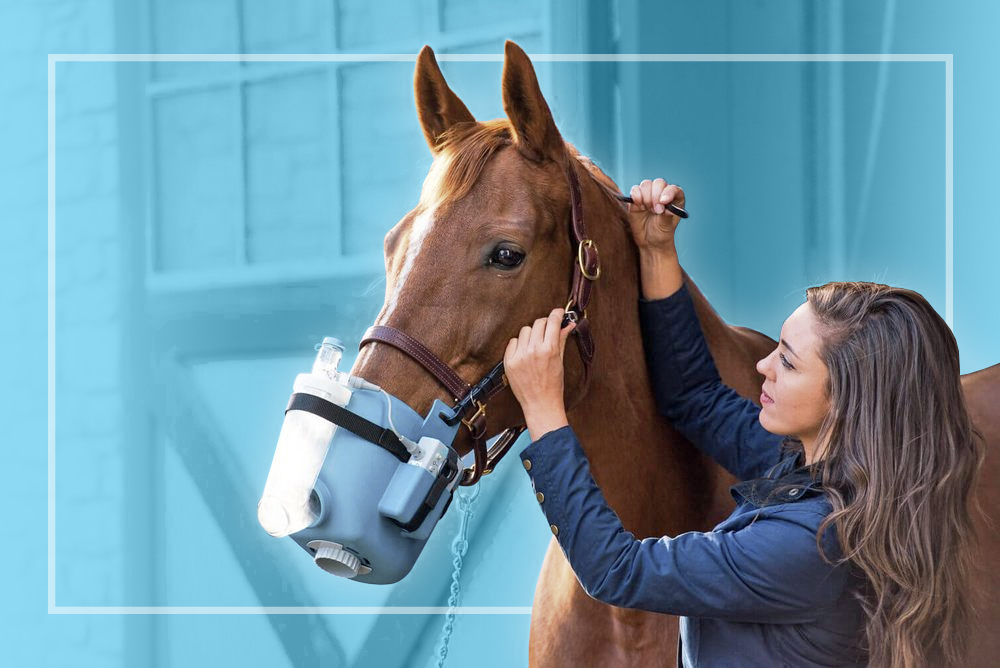By Stephanie Davis, DVM
Owner & Sport Horse Veterinarian, Davis Equine;
Three-Day Eventer;
Barn Manager - The Plains, VA
Nuclear scintigraphy is a helpful diagnostic modality generally used, in horses, to look at radioisotope uptake in bone. A radiopharmaceutical is injected (or in this case, inhaled) into the horse and the radiation emitted by the animal is captured by external detectors (gamma camera) to create the image. The radiopharmaceutical is attached to a drug that travels to a specific area of the body. When you assess the image from the scan, you want to look at the distribution as well as the concentration of the “uptake” of the radiopharmaceutical. The amount and distribution of the uptake gives you an indication of how that specific organ is functioning. In the case with the Flexineb®, it was important to demonstrate how well the nebulizer can deliver medication to the lower airway.
Medication delivery is very important, of course, because many airway diseases involve the lower airway and cannot be properly treated if the size of the nebulized particle is too large to reach the small airways deep in the lung. The particle size required to reach the lower airway is 5 microns or less in diameter. For perspective on size, a human red blood cell is approximately 5 microns in diameter. So, the technology to create a particle that size is necessary to be able to treat the lung properly.
The Flexineb® has been extensively tested and we know that 68% of the medication inhaled is 5 microns or less. So, this means that 68% of the drug will reach the lower airways and the rest will likely not get further than the upper airway and trachea. With today’s technology, that is a very competitive and successful percentage. With this data, Flexineb® wanted to visually show how well the nebulizer can deliver medication to the lower airway. With the use of the scintigraphy it is clear that the lung field achieves full exposure to the medication.
Published January 2014



